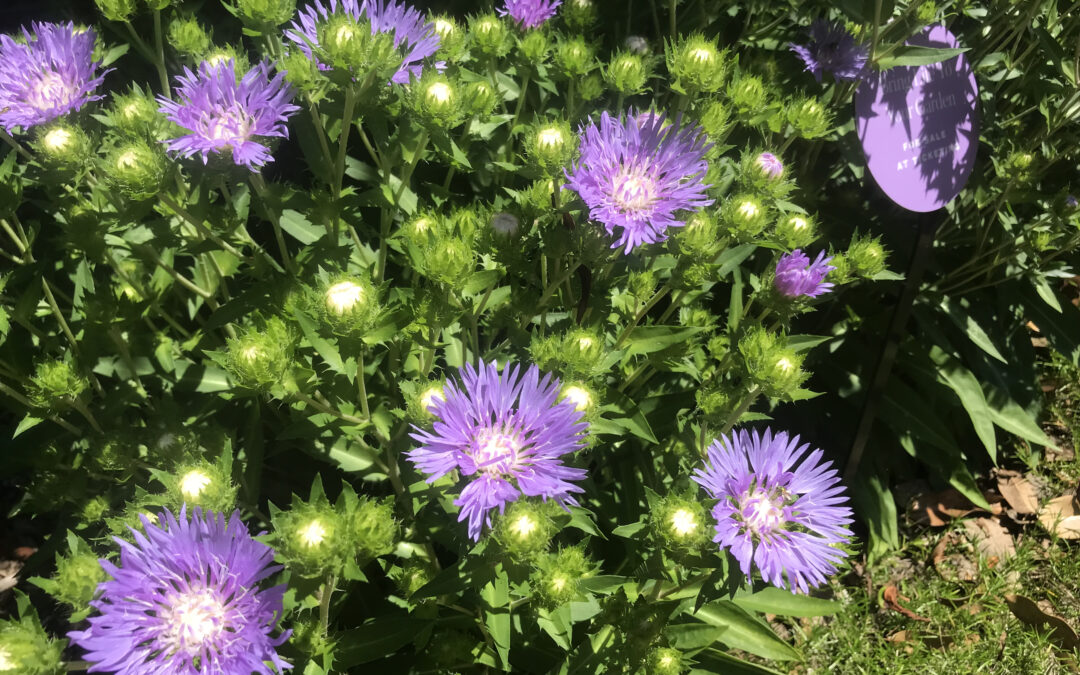Whether you are working towards adding more native plants to your garden or seeking plants that can handle our increasingly hot South Jersey summers, look no further than Stokes’ aster. Bluish-purple flowers from this native perennial will attract pollinators such as bees, birds and butterflies to your garden. Though hungry deer will eat almost any plant, Stokes’ asters are known to be resistant to deer and rabbits.
Plant your Stokes’ aster in a location with full sun (six to eight hours) to get the most blooms. While the plant is young, keep it well-watered. Though it likes moist soil, it should have good drainage. Given these proper conditions, Stokes’ asters are tough little perennials that will stand up to heat and humidity. Once established, you will have a drought-tolerant, carefree plant.
Don’t confuse Stokes’ asters (Stokesia) with other types of asters. If you are a gardener, you might be more familiar with fall-blooming asters. During the many years my children were in the middle school band, they sold mums as fundraisers for their band trips. But the purple flowers sold as “mums” are actually fall-blooming asters, not mums. New England asters also bloom in the fall, but these deep purple flowers tower over the other plants, reaching heights of over four feet. Stokes’ asters, however, grow during the warm months of the gardening season, blooming from spring to late summer. You can often prolong their blooms into fall by deadheading the flowers regularly. Stokes’ asters land in a separate category of their very own. They stay lower to the ground, growing 12 to 24 inches high, and generally have larger flower heads than other types of asters. Stokes’ asters have cornflower-like blooms compared to the smaller, daisy-like flowers of fall asters.
Stokes’ asters will form dense clumps that can be divided every two to three years to invigorate the original plant. This will give you new plants for your garden or extras to share with a friend. Divide Stokes’ asters in early spring so that the plants have time to establish their roots before summer heat begins. Water judiciously while the new plant is young.
In addition to gaining new plants by division, Stokes’ asters can also be propagated from cuttings. They also make a unique cut flower that has a long vase life. If you change the water regularly, they should last approximately one week as a cut flower. While purple or bluish-purple is the most common color, Stokes’ asters can also be found in pink or white.
We would love to hear from our readers. If you have questions or would like more information about a particular category, send your questions or comments to shorelocalgardener@gmail.com.
Tammy Thornton lives with her husband, children, and crazy pets while enjoying a life of gardening, cooking, and going to the beach.

















